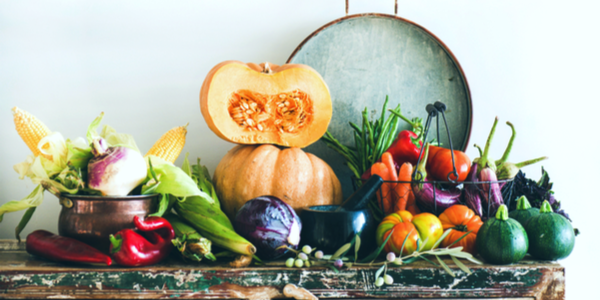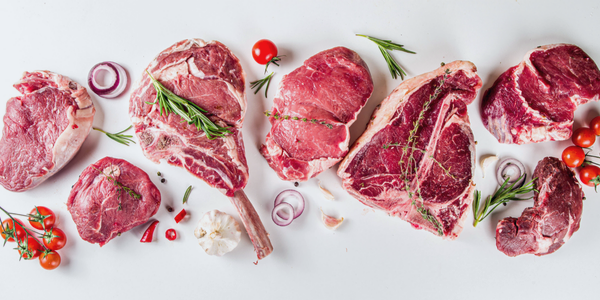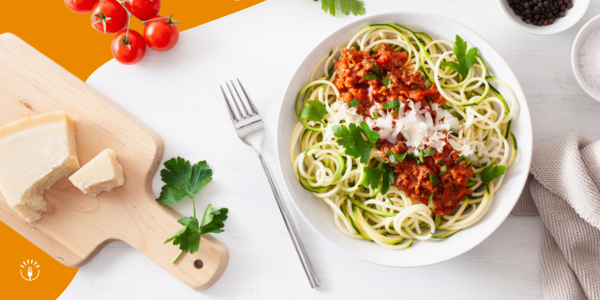
When fall brings the shift in leaves changing colors and cooler temperatures, in-season vegetables that come to mind include pumpkin, sweet potatoes, Brussels sprouts, butternut squash, potatoes, and beets.
While these in-season fall vegetables are delicious and certainly provide many health benefits, other- maybe lesser-known- fall vegetables also deserve the spotlight and to be included in the kitchen and table during the fall.
Looking to expand fall dishes and flavors to try this year? Explore beyond familiar in-season vegetables with these top fall vegetables along with different ways to use them in the kitchen.
10 Healthy, Lesser Known Fall Vegetables (& How to Use Them!)
While pumpkins, sweet potatoes, Brussel sprouts, and squash are most familiar with the fall season, there are many other healthy fall vegetables that can be used in a variety of ways.
Try these below vegetables this year to enjoy not only their health benefits but their unique flavors and uses.
Beet Greens
Beets have many health benefits and are a versatile vegetable to use not only in the fall but all year long. Because of this, the beet greens can get overlooked and thrown away. Instead, turn these leaves from food scraps into a must-try on your fall vegetable list.
Why eat beet greens besides avoiding food waste? Beet greens are a good source of vitamin C, vitamin A and also provide a source of nitrates which is the same compound in beets that positively impacts heart and blood pressure health. Beet greens are also a good source of fiber, calcium, magnesium, and a source of B vitamins. Surprisingly, beet greens also have more iron than spinach!
Similar to Swiss chard, the stems and leaves of beet greens can be eaten. Make sure to thoroughly wash first, then chop up the stems and leaves. Add some olive or avocado oil, garlic, salt, pepper, and any other desired spices. Saute until tender and enjoy as a delicious side.
There are many other ways to eat beet greens and use them with beets in cooked dishes such as soups, risotto, roasted veggie salads, or pasta dishes.
Fennel
Fennel should no longer be an under-rated fall vegetable, as it has a delicious flavor, and is a good source of fiber, vitamins, and minerals. In the same family as carrots, fennel is a versatile root vegetable that can be enjoyed fresher cooked. Similar to beets, all parts of the fennel plant can be enjoyed from the root bulb to the stems and leaves.
Fennel's mild licorice-like flavor may sound off-putting, but it can serve as a dynamic flavor pairing for salads or other roasted savory dishes. In fact, when sauteing or roasting the fennel bulb, the taste of fennel gets sweeter. When used fresh, chopped fennel bulbs can be added to salads with a texture similar to raw celery.
This fall, enjoy fennel in a fennel-forward salad or simply enjoy roasting sliced fennel with olive oil, salt, and pepper. While the fennel bulb is most commonly used, use the tops by mincing them up and use as a garnish for salads, soups, and meat dishes.
Rutabaga
Another root fall vegetable, rutabaga, is another must-try this year. Also called a Swedish turnip, rutabaga is considered a cross between a turnip and cabbage. Rutabaga is a cruciferous vegetable that often gets overlooked with other more well-known cruciferous vegetables like broccoli, cauliflower, Brussels sprouts, or cabbage.
Rutabaga does have a slightly bitter flavor, but when roasted, it also has a slightly sweet and buttery flavor. This makes them a good addition to mashed potatoes or simply roasted with other fall root vegetables.
Another reason to try rutabaga? It can also be used as a low-carb alternative for French fries!
Bok Choy
Bok Choy is traditionally a staple in Chinese cuisine, and since it grows well in cool weather, is widely available in the fall. Like rutabaga, it is also a fall cruciferous vegetable that is not as widely celebrated although it should be.
Bok choy is a nutrient-dense cabbage/leafy green vegetable that can be shredded raw in salads or used in stir-fries, soups, or sauteed by itself with garlic and ginger. It offers similar health benefits as other cruciferous vegetables with being associated with lowering the risk for certain cancers.
Tip: do not throw away the end of bok choy. Instead, use the end to re-grow a new one!
Artichoke
The good news for enjoying artichokes is they have two seasons they are widely available: spring and fall. Artichokes can take some time and slight effort to enjoy, but the end result is worth the extra steps.
The reasons for eating artichokes, besides the taste, are many. Artichokes are an excellent source of prebiotic fiber, potassium, magnesium, B vitamins, and vitamin C.
For choosing and handling an artichoke:
• Fresh artichokes will last up to a week loosely wrapped in plastic in the fridge.
• Leaves should form a tight layer.
• The thorny tips of leaves can be clipped before cooking and eating.
• Artichokes can be roasted whole or leaves trimmed off to get the artichoke heart (what is considered most delicious!).
Artichokes can be grilled, steamed, or roasted making them a versatile addition to fall meals.
Delicata Squash
In the fall shadow of pumpkin, butternut, acorn, and spaghetti squash is the delicata squash. Delicata squash is sometimes also referred to as "sweet potato squash", as it has a slightly sweet flavor.
A perk of choosing delicata squash over other squashes: the skin is edible and does not have to be peeled, meaning more time can be spent out of the kitchen. Just be sure to wash the skin before eating, as there may be a slight wax coating.
Delicata squash can be enjoyed most of the same ways as other squash including simply cutting in half, scooping out seeds, and cutting into smaller cubes or in the shape of half-moons. These pieces can be tossed with olive oil and desired spices- sweet or savory- and roasted until tender.
Broccoli Rabe
Broccoli rabe is considered thinner, stalkier, and more bitter relative to traditional broccoli. Why should it be on your must-try fall vegetable list? Broccoli rabe can be used similar to broccoli but can also elevate dishes when paired with the right flavors. It also takes less chopping compared to regular broccoli, so it can save a few minutes of prep time in the kitchen.
According to Bon Appetit, the slightly bitter flavor and texture of broccoli rabe compliments flavors of cheese, earthy flavors, and can go well in pasta or rice dishes. Of course, it can also be enjoyed simply roasted with olive oil, garlic, and squeezed lemon.
Celery Root (Celeriac)
Celeriac may look unbecoming, but it should not be passed over because of its unappealing looks. Celery root is high in vitamin K with a one-cup serving providing 80% Daily Value (DV). It is also a good source of vitamin C, potassium, and manganese.
Celery root can be eaten raw or cooked and has a mild celery/parsley flavor. It can be eaten raw with dips, like raw celery, or added to salads. Celeriac can be the base for a soup, like this creamy celeriac soup with fennel or roasted for celery root fries.
Kohlrabi
Another vegetable that may be intimidating from the looks is kohlrabi. Similar to fennel, the whole plant can be eaten, but the most focus is put on using the bulb part. Kohlrabi tastes similar to broccoli stems or when eaten raw tastes similar to radish. The color of kohlrabi can range from white, green to purple.
Like celery root, it can be enjoyed raw and can be added to salads. When cooked, the taste sweetens and the outside can caramelize. Roasted kohlrabi can be a fall season side dish, or kohlrabi can be used as a base for soups or stir-fries.
Radicchio
Radicchio is mostly native to Italian cuisine and has a bitter flavor. However, the bitter flavor can be tamed by shredding raw radicchio finely and dressing with olive oil and vinegar ahead of time. Like celery root, radicchio is high in vitamin K as well as fiber and antioxidants.
Radicchio can be used in a variety of ways. Radicchio can be used as a base for a salad like in this orange radicchio salad, or it can be grilled with just some olive oil, balsamic vinegar, salt, and pepper. For a simple way to use radicchio, add it shredded to any salad during the fall for a pop of purple color, a boost of nutrients, and contrast in flavor.
In Summary: New Fall Vegetables to Try This Year
While there are many familiar healthy fall vegetables, some of the lesser-known fall vegetables deserve just as much spotlight for being delicious and nutritious. These new fall vegetables can easily be added in a roasted vegetable medley, used as a base for soups, salads or featured alone as a roasted side.
Some of these vegetables may seem intimidating to use- like celeriac, kohlrabi, or fennel- but once used and proved delicious, they can fast become a new fall staple vegetable.
References:
Chilson A. 10 incredible health benefits of beet greens. Just Beet It. Published April 26, 2021. https://www.justbeetit.com/beet-blog-index/10-incredible-health-benefits-of-beet-greens.
Christensen E. Kohlrabi is weird! and here's what you can do with it. Kitchn. Published May 2, 2019. https://www.thekitchn.com/kohlrabi-is-weird-heres-what-you-can-do-with-it-ingredient-spotlight-189813. Published May 2, 2019.
Jean-Hard L. 16 stellar ways to Use Radicchio. Food52. Published September 28, 2020. https://food52.com/blog/11879-radicchio-and-our-11-favorite-ways-to-use-it.
Rutabaga: What it is and its health benefits. WebMD. https://www.webmd.com/diet/health-benefits-rutabaga#1.







